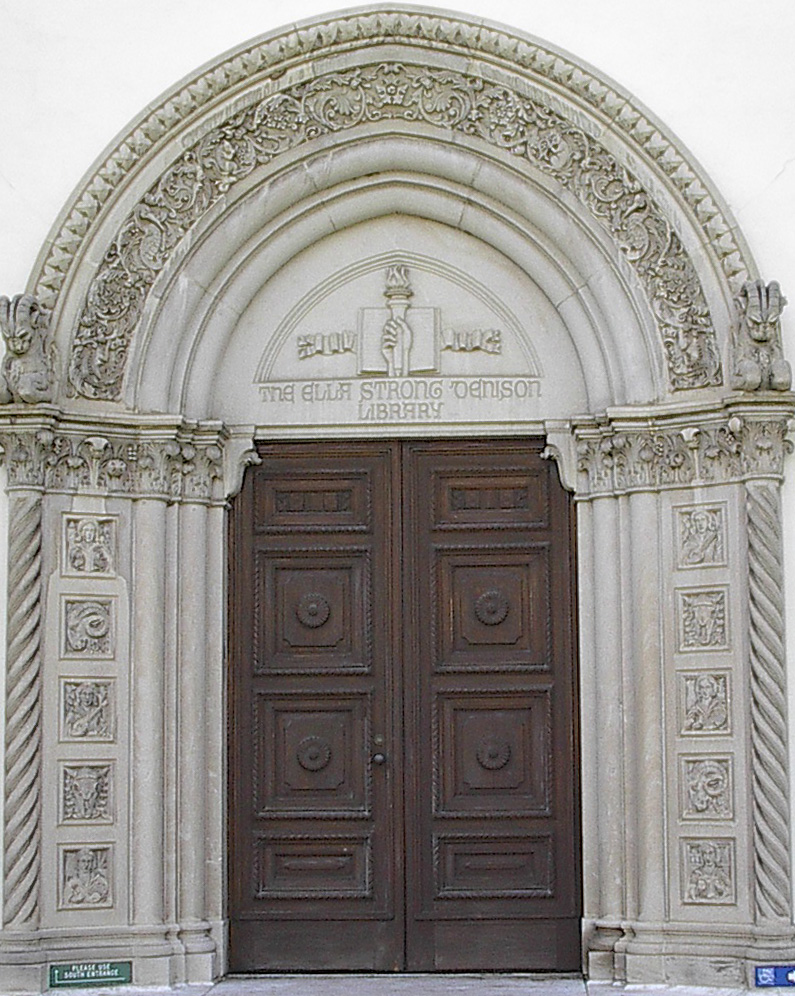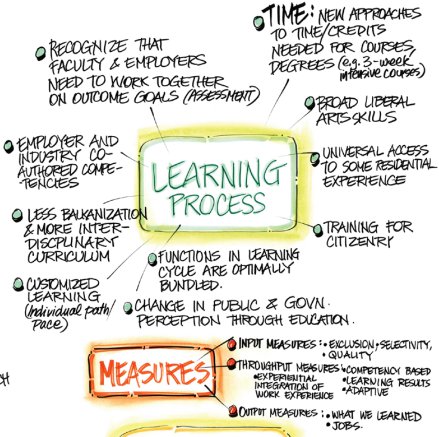 What do college and university presidents think of the future of higher education? eCampus News has an interesting summary of a recent think-tank-y project, wherein
What do college and university presidents think of the future of higher education? eCampus News has an interesting summary of a recent think-tank-y project, wherein
14 chief executive officers from a diverse group of institutions participated in two separate sessions last year (2013)—institutions such as Northeastern University, MIT, Western Governors University, etc.—with the goal of engaging in a “robust and wide-ranging conversation about the various drivers of change and potential reactions to those drivers.”
The results (pdf) fall into two categories, trends and models.
The trends these presidents picked are unusually tech-centric. I can’t think of many presidents who would write a sentence including “(e.g., Mac Forums, Fluther, Instructables, and wikiHow)”. Indeed, they assume that “[t]echnology-enhanced education will be available in abundant supply and be treated as part of the standard academic environment”.
The trends include open education (a/k/a “the content commons”), learning analytics/big data, and new forms of assessment/certification. There’s also an interesting take on social media and resulting behaviors:
‘Socialstructing’ is a form of value creation that involves aggregating micro-contributions from large networks of people using social tools and technologies…
MOOCs fall into the content commons. Socialstructing they get from IFTF.
There isn’t much there about finance, demographics, policy, state support, etc. The presidents were thinking of those, though, as we’ll see in the models that come next.
Given those trends as drivers, what possible campuses do the presidents see?
They picked out four.
First is the classic liberal arts college. It seems to not change much from what we know today, beyond some extra technology integration: “offering advanced learning tools and new spaces”. It will be expensive, and prestige one of its leading selling points.
Second, “the greater community college“. This is devoted even more to meeting community needs through on-demand, flexible, often small-sized learning.
“boot camps to build student portfolios and achievements that meet the personal learning goals determined by each individual student”… Competency-based education, as well as multiple pathways fueled by analytics, diagnostics and goal advisors will be stressed,
Now here’s where economics and demographics comes in, in the form of cheap, locally sourced labor:
the model will also build a “volunteer pipeline from within the larger geographical community, connecting retired workers from the large baby boomer cohort with students to serve as tutors and mentors.”
Note that one well. Adjuncts currently draw heavily from the younger generations.
Third, “the entrepreneur’s institution“. This is a start-up incubator, basically.
the institution tak[es] an equity stake in new ventures launched by students and provide a screening process to evaluate business plans. “Venture capital firms will invest in the university in exchange for early access to its students and their discoveries,” describes the report. “The physical campus in this model would offer high-immersion live/work spaces, ample networking events, mentorship, and spontaneous group meetings.”
Fourth, the corporate and global learner’s institution, “[l]ike Netflix for higher-ed.” This is an on-demand model even more so than the new community college one. For instance,
this for-profit model will charge a monthly subscription fee by offering the equivalent of “frequent-learner point and rewards,” says the report.
And it has a replacement for sports:
Using an online platform with skills-gap training for globally-recognized credentials, the online experience will be supplemented with interactive gaming for team-building as an alternative to traditional athletics at brick-and-mortar institutions.
I’d like to see that one in practice.
This models quartet says much about what presidents are thinking, not least for what isn’t there: new buildings; faculty governance; tenure; research outside corporate R+D. There’s a focus on integrating features of the modern economy, from on-demand service to a rewards system. The presidents draw on some current work in educational technology, such as eportfolios. They are very keen on incorporating business into academia more than it already is. They want college to be more affordable than it is. They assume increasing amounts of students transferring between institutions.
I can see each of these coming to pass, in part because there’s a paying audience for each one, and that’s where much of education discussions are headed. There are also powerful political and structural forces driving these, such as persistence outrage over tuition prices and the ageing of Americans.
I applaud the effort. This is a bolder type of futuring work than we usually see from American higher ed.
(thanks to Josh Fleming on Twitter for the link; photo of Scripps library by myself)






intriguing (and no doubt deliberate) comparison/contrast with the Ivory Tower post ~ an institution I sometimes characterize as the Ivory Silo™
Were there any thoughts on the specific steps getting from here to there? I’d like to see academics thinking about their own versions of “entrepreneur institutions” (perhaps more of a Mondragón University model, which the cultural theory folk tend to forget orients by choice to applied areas)
Chris Newfield has a good Remaking the Universitypost on 2014 trends he sees as moving into 2015, not exactly a long durée. I may be missing a whole body of trend/prediction posts but haven’t seen much in the way of “future of higher ed” predictions. NPR’s cover’s Kindergarten through higher ed.
So this is the predictions (or rather possibilities) one, and the following is the review (but of more than a year)
Pingback: The Future of Higher Ed: Tech – Digital Mobile Language Learning
Pingback: The Future of Higher Ed: Tech | Digital & Mobile Language Learning
My husband has to pay money to his ex. for youngster support.
I continued to pay the $750 on financial savings and selling my possessions as a result of
I needed to support my son.